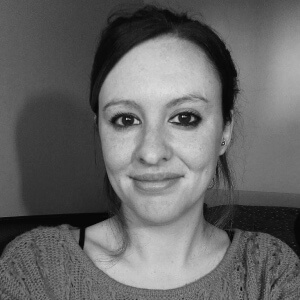Learn About the Cutting-Edge Cognitive Behavioral Therapy for Dissociative Disorders


Written and verified by the psychologist Alicia Escaño Hidalgo
Did you know that cognitive behavioral therapy is a cutting-edge treatment basing on the latest advances in psychology research? In fact, it works for anxiety, depression, and other dissociative disorders and psychological problems. There are numerous cognitive behavioral therapy techniques. However, they all aim at altering self-defeating thoughts and overwhelming emotions.
Most importantly, cognitive behavioral therapy techniques represent some of the most effective procedures in CBT. They improve thinking, mood, and behavior. But what’s cognitive behavioral therapy? CBT is a psychological treatment proving to be effective for many dissociative disorders and other issues.
For example, schizophrenia, anxiety disorders, addiction, marriage problems, eating disorders, and mental illness. Likewise, numerous research studies suggest CBT leads to significant improvement in functioning and quality of life. In many, CBT showed its effectiveness over other forms of therapy or psychiatric medications.
Most importantly, it’s pivotal to emphasize there are advances in CBT, in both research and clinical practice. Indeed, CBT is an approach for which there’s ample scientific evidence that the methods were successful. Likewise, they actually produced major change. In this regard, CBT differs from many other forms of psychological treatment.
Therefore, CBT places an emphasis on helping individuals learn to be their own therapists. Via exercises in the therapy session as well as “homework” exercises outside of sessions, patients develop skills. Not only does therapy help patients develop coping skills but they also learn to change. In other words, they can learn to change their own thinking, problematic emotions, and behavior.
CBT therapists emphasize what’s going on in the person’s current life, rather than what led up to their difficulties. Thus, the therapist needs a certain amount of information about the patient’s history. However, the focus is primarily on moving forward in time to develop more effective ways of coping with life.

Dissociative disorders – cognitive behavioral therapy
Firstly, dissociative disorders are mental disorders experiencing a disconnection and a lack of continuity between thoughts, memories, surroundings, actions, and identity. People with dissociative disorders escape reality in ways that are involuntary and unhealthy. Most importantly, this causes problems with functioning in everyday life.
Likewise, dissociative disorders usually develop as a reaction to trauma and help keep difficult memories at bay. Symptoms, ranging from amnesia to alternate identities, depend on the type of dissociative disorder you have. Stress can worsen symptoms, making them more obvious. According to the APA, there are three major disorders:
- Dissociative amnesia. The main symptom is memory loss that’s more severe than normal forgetfulness. For instance, you can’t recall information about yourself or events in your life, especially from a traumatic time. Lastly, an episode of amnesia usually occurs suddenly and may last minutes, hours, or rarely, months, or years.
- Dissociative identity disorder. This disorder refers to “switching” to alternate identities. In other words, you feel the presence of many people talking or living inside your head. Likewise, you feel as though other identities possess you. Each identity has a unique name, history, and characteristics. For example, differences in voice, gender, and even mannerisms. Lastly, people with dissociative identity disorder typically also suffer from dissociative amnesia.
- Depersonalization disorder. Firstly, this disorder involves an ongoing or episodic sense of detachment or being outside yourself. In other words, you observe your actions, thoughts, and self from a distance like watching a movie. So, other people around you seem foggy or dreamlike. Lastly, symptoms are profoundly distressing. They last only a few moments or come and go for years.
Types of treatment
However, with treatment, many people are successful in addressing the major symptoms of dissociative disorder and improving their ability to function and live a productive, fulfilling life. Treatment typically involves psychotherapy. Therefore, therapy can help people gain control over the dissociative process and symptoms.
The goal of therapy is to help integrate the different elements of identity. It may be intense and difficult, as it involves remembering and coping with past traumatic experiences. They also commonly use cognitive behavioral therapy and dialectical behavioral therapy. Lastly, hypnosis is also helpful in treating dissociative identity disorder.
Techniques therapists most often use with CBT
Believe it or not, the key principle behind cognitive behavioral therapy is that your thought patterns affect your emotions. In turn, they also can affect your behaviors. For instance, CBT highlights how negative thoughts can lead to negative feelings and actions. But if you reframe your thoughts in a positive way, it leads to more positive feelings and helpful behaviors.
Your therapist will teach you how to make changes you can implement right now. These are skills you can continue to use for the rest of your life. Depending on the issue you’re dealing with and your goals, there are several ways to approach CBT. Whatever approach your therapist takes, it’ll include:
- Identifying specific problems or issues in your daily life.
- Becoming aware of unproductive thought patterns and how they can impact your life.
- Identifying negative thinking and reshaping it in a way that changes how you feel.
- Learning new behaviors and putting them into practice.
In other words, after speaking with you and learning more about the issue you want help with, your therapist will decide which is the best CBT technique for your dissociative disorder or another issue.
The four stages of CBT
Firstly, there are four important stages in cognitive behavioral therapy treatment. You and your therapist can work together at each stage:
- Assessment stage.
- Cognitive stage.
- Behavior stage.
- Learning stage.
In the assessment stage, you and your therapist get to know each other. For example, your therapist usually forms a treatment plan. They often have some idea about how long your treatment might take.
In the cognitive stage, you and your therapist work together to understand your thoughts. So, you might spend some time discussing past events that have made you think the way you do.
In the behavior stage, you and your therapist work together to find new patterns of thinking. In other words, you apply your new patterns of thinking to new behaviors.
Lastly, in the learning stage, you and your therapist work together to make sure that the changes are permanent. You learn how to use the principles of CBT for yourself in the future. You can cope with future events without needing any more therapy.
Believe it or not, the four stages aren’t always separate. They can get a bit mixed up. This is because CBT isn’t a rigid therapy system with fixed rules. However, successful CBT always has all four stages.

What can CBT help with?
Firstly, cognitive behavioral therapy is utterly effective for a variety of dissociative disorders and their complications. Most importantly, it works alone or in combination with other therapies or medications. This includes:
- Addictions.
- Anxiety disorders.
- Bipolar disorders.
- Chronic pain.
- Depression.
- Dissociative amnesia.
- Drug use and alcoholism.
- Eating disorders.
- Identity disorder.
- Major difficulties in personal relationships and at work.
- Obsessive-compulsive disorder (OCD).
- Personality disorders.
- Phobias.
- Physical symptoms such as lightheadedness or non-epileptic seizures.
- Post-traumatic stress disorder (PTSD).
- Schizophrenia.
- Self-harm or mutilation.
- Sexual disorders.
- Sleep disorders, including nightmares, insomnia, and sleepwalking.
- Suicidal thoughts and behaviors.
- Tinnitus.
Believe it or not, CBT can also help with a variety of everyday problems. For example, learning to cope with stressful situations or dealing with anxiety over a certain issue. You don’t need a medical diagnosis to benefit from CBT. It can also help with:
- Learning to manage powerful emotions, like anger, fear, or sadness.
- Dealing with grief.
- Managing symptoms or preventing mental illness relapses.
- Coping with physical health problems.
- Conflict resolution.
- Improving communication skills.
- Assertiveness training.
In short, cognitive behavioral therapy (CBT) is now a well-established, successful type of short-term therapy. This cutting-edge therapy bases on the connections between your thoughts, emotions, and behaviors and how exactly they influence each other. There are quite a few techniques that therapies use with CBT.
Depending on the type of dissociative disorder or issue you want help with, seek a therapist. Your therapist will surely help figure out which CBT strategy best suits your particular needs.
Did you know that cognitive behavioral therapy is a cutting-edge treatment basing on the latest advances in psychology research? In fact, it works for anxiety, depression, and other dissociative disorders and psychological problems. There are numerous cognitive behavioral therapy techniques. However, they all aim at altering self-defeating thoughts and overwhelming emotions.
Most importantly, cognitive behavioral therapy techniques represent some of the most effective procedures in CBT. They improve thinking, mood, and behavior. But what’s cognitive behavioral therapy? CBT is a psychological treatment proving to be effective for many dissociative disorders and other issues.
For example, schizophrenia, anxiety disorders, addiction, marriage problems, eating disorders, and mental illness. Likewise, numerous research studies suggest CBT leads to significant improvement in functioning and quality of life. In many, CBT showed its effectiveness over other forms of therapy or psychiatric medications.
Most importantly, it’s pivotal to emphasize there are advances in CBT, in both research and clinical practice. Indeed, CBT is an approach for which there’s ample scientific evidence that the methods were successful. Likewise, they actually produced major change. In this regard, CBT differs from many other forms of psychological treatment.
Therefore, CBT places an emphasis on helping individuals learn to be their own therapists. Via exercises in the therapy session as well as “homework” exercises outside of sessions, patients develop skills. Not only does therapy help patients develop coping skills but they also learn to change. In other words, they can learn to change their own thinking, problematic emotions, and behavior.
CBT therapists emphasize what’s going on in the person’s current life, rather than what led up to their difficulties. Thus, the therapist needs a certain amount of information about the patient’s history. However, the focus is primarily on moving forward in time to develop more effective ways of coping with life.

Dissociative disorders – cognitive behavioral therapy
Firstly, dissociative disorders are mental disorders experiencing a disconnection and a lack of continuity between thoughts, memories, surroundings, actions, and identity. People with dissociative disorders escape reality in ways that are involuntary and unhealthy. Most importantly, this causes problems with functioning in everyday life.
Likewise, dissociative disorders usually develop as a reaction to trauma and help keep difficult memories at bay. Symptoms, ranging from amnesia to alternate identities, depend on the type of dissociative disorder you have. Stress can worsen symptoms, making them more obvious. According to the APA, there are three major disorders:
- Dissociative amnesia. The main symptom is memory loss that’s more severe than normal forgetfulness. For instance, you can’t recall information about yourself or events in your life, especially from a traumatic time. Lastly, an episode of amnesia usually occurs suddenly and may last minutes, hours, or rarely, months, or years.
- Dissociative identity disorder. This disorder refers to “switching” to alternate identities. In other words, you feel the presence of many people talking or living inside your head. Likewise, you feel as though other identities possess you. Each identity has a unique name, history, and characteristics. For example, differences in voice, gender, and even mannerisms. Lastly, people with dissociative identity disorder typically also suffer from dissociative amnesia.
- Depersonalization disorder. Firstly, this disorder involves an ongoing or episodic sense of detachment or being outside yourself. In other words, you observe your actions, thoughts, and self from a distance like watching a movie. So, other people around you seem foggy or dreamlike. Lastly, symptoms are profoundly distressing. They last only a few moments or come and go for years.
Types of treatment
However, with treatment, many people are successful in addressing the major symptoms of dissociative disorder and improving their ability to function and live a productive, fulfilling life. Treatment typically involves psychotherapy. Therefore, therapy can help people gain control over the dissociative process and symptoms.
The goal of therapy is to help integrate the different elements of identity. It may be intense and difficult, as it involves remembering and coping with past traumatic experiences. They also commonly use cognitive behavioral therapy and dialectical behavioral therapy. Lastly, hypnosis is also helpful in treating dissociative identity disorder.
Techniques therapists most often use with CBT
Believe it or not, the key principle behind cognitive behavioral therapy is that your thought patterns affect your emotions. In turn, they also can affect your behaviors. For instance, CBT highlights how negative thoughts can lead to negative feelings and actions. But if you reframe your thoughts in a positive way, it leads to more positive feelings and helpful behaviors.
Your therapist will teach you how to make changes you can implement right now. These are skills you can continue to use for the rest of your life. Depending on the issue you’re dealing with and your goals, there are several ways to approach CBT. Whatever approach your therapist takes, it’ll include:
- Identifying specific problems or issues in your daily life.
- Becoming aware of unproductive thought patterns and how they can impact your life.
- Identifying negative thinking and reshaping it in a way that changes how you feel.
- Learning new behaviors and putting them into practice.
In other words, after speaking with you and learning more about the issue you want help with, your therapist will decide which is the best CBT technique for your dissociative disorder or another issue.
The four stages of CBT
Firstly, there are four important stages in cognitive behavioral therapy treatment. You and your therapist can work together at each stage:
- Assessment stage.
- Cognitive stage.
- Behavior stage.
- Learning stage.
In the assessment stage, you and your therapist get to know each other. For example, your therapist usually forms a treatment plan. They often have some idea about how long your treatment might take.
In the cognitive stage, you and your therapist work together to understand your thoughts. So, you might spend some time discussing past events that have made you think the way you do.
In the behavior stage, you and your therapist work together to find new patterns of thinking. In other words, you apply your new patterns of thinking to new behaviors.
Lastly, in the learning stage, you and your therapist work together to make sure that the changes are permanent. You learn how to use the principles of CBT for yourself in the future. You can cope with future events without needing any more therapy.
Believe it or not, the four stages aren’t always separate. They can get a bit mixed up. This is because CBT isn’t a rigid therapy system with fixed rules. However, successful CBT always has all four stages.

What can CBT help with?
Firstly, cognitive behavioral therapy is utterly effective for a variety of dissociative disorders and their complications. Most importantly, it works alone or in combination with other therapies or medications. This includes:
- Addictions.
- Anxiety disorders.
- Bipolar disorders.
- Chronic pain.
- Depression.
- Dissociative amnesia.
- Drug use and alcoholism.
- Eating disorders.
- Identity disorder.
- Major difficulties in personal relationships and at work.
- Obsessive-compulsive disorder (OCD).
- Personality disorders.
- Phobias.
- Physical symptoms such as lightheadedness or non-epileptic seizures.
- Post-traumatic stress disorder (PTSD).
- Schizophrenia.
- Self-harm or mutilation.
- Sexual disorders.
- Sleep disorders, including nightmares, insomnia, and sleepwalking.
- Suicidal thoughts and behaviors.
- Tinnitus.
Believe it or not, CBT can also help with a variety of everyday problems. For example, learning to cope with stressful situations or dealing with anxiety over a certain issue. You don’t need a medical diagnosis to benefit from CBT. It can also help with:
- Learning to manage powerful emotions, like anger, fear, or sadness.
- Dealing with grief.
- Managing symptoms or preventing mental illness relapses.
- Coping with physical health problems.
- Conflict resolution.
- Improving communication skills.
- Assertiveness training.
In short, cognitive behavioral therapy (CBT) is now a well-established, successful type of short-term therapy. This cutting-edge therapy bases on the connections between your thoughts, emotions, and behaviors and how exactly they influence each other. There are quite a few techniques that therapies use with CBT.
Depending on the type of dissociative disorder or issue you want help with, seek a therapist. Your therapist will surely help figure out which CBT strategy best suits your particular needs.
All cited sources were thoroughly reviewed by our team to ensure their quality, reliability, currency, and validity. The bibliography of this article was considered reliable and of academic or scientific accuracy.
- Caballo, V (2007). Manual para el tratamiento cognitivo conductual de los trastornos psicológicos. SIGLO XXI. Vol. I
This text is provided for informational purposes only and does not replace consultation with a professional. If in doubt, consult your specialist.







